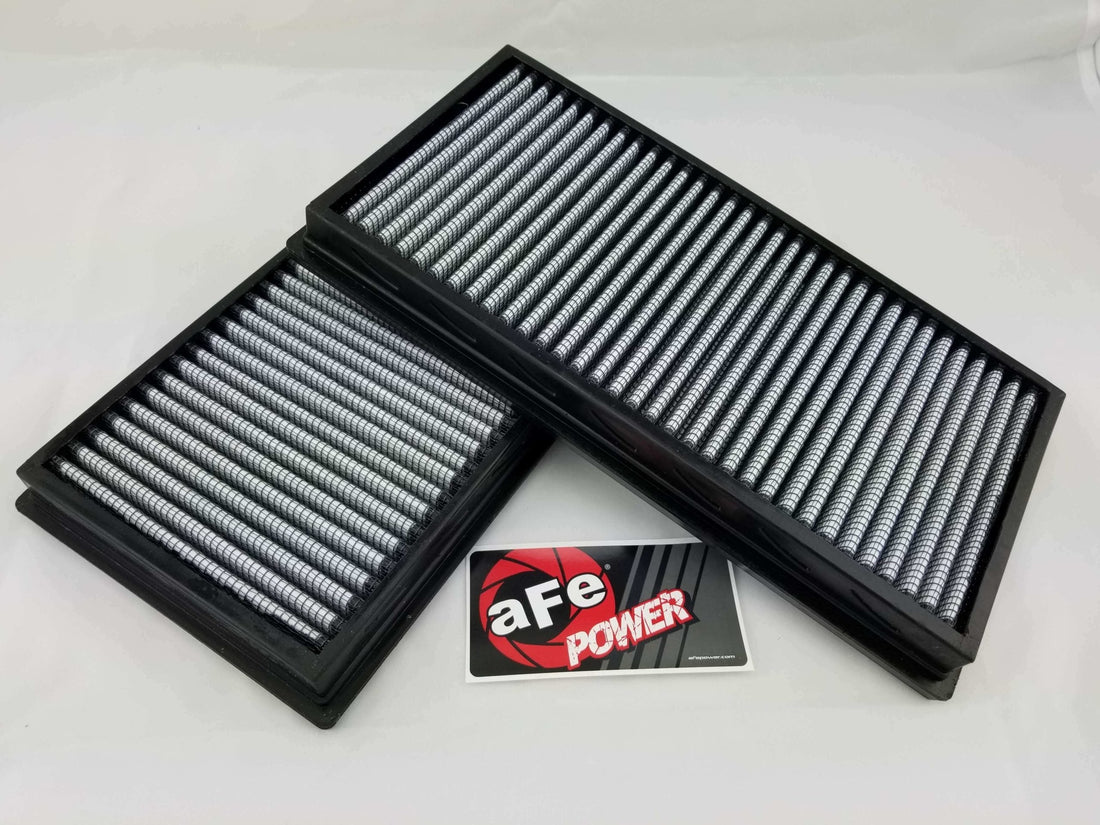
Mercedes Intake Guide: Why Drop-In Filters Beat Cone Intakes
When it comes to performance upgrades, intakes are often one of the first mods Mercedes owners consider. But not all intake solutions are created equal. This guide breaks down why high-quality drop-in filters often outperform aftermarket cone-style intakes — especially when used in combination with ECU tuning.
Understanding the Mercedes Airbox Design
- Channels cold air efficiently from the grille or fender
- Maintains air velocity with smooth ducting
- Shields intake air from under hood heat
- Prevents turbulence near the MAF sensor
Replacing this with a cone filter might seem like a performance upgrade, but in reality it often disrupts airflow, reduces consistency, and increases intake air temps.
Drop-In Filters: Power Without Compromise
- Higher flow filter media
- Reduced restriction across the surface area
- Reusability and long-term cost savings
Because the factory airbox is already engineered for balanced delivery, a drop-in filter simply enhances its efficiency — resulting in smoother throttle response and better upper-RPM breathing.
Drop-In vs Cone Intake – Quick Comparison
| Feature | Drop-In Filter | Cone Intake |
|---|---|---|
| Heat Protection | Excellent (uses OEM airbox) | Poor unless heat-shielded |
| MAF Compatibility | Fully compatible | May trigger codes |
| Airflow Stability | Consistent | Often turbulent |
| Real-World Gains | Reliable with tuning | Inconsistent |
Real-World Performance with Tuning
We’ve tested various intake setups on both AMG and non-AMG platforms. When paired with a proper ECU tune, drop-in filters consistently outperform cone filters in both dyno and street conditions.
- Cone intakes raise IATs due to heat soak
- Disrupt airflow patterns
- Trigger MAF calibration issues
- Require custom heat shields to function reliably
In contrast, drop-in filters:
- Preserve OEM airbox shielding
- Work cleanly with the stock MAF
- Deliver stable, reliable airflow under load
Sure, an open-air cone filter might show higher power on the dyno — in a controlled environment. But in real-world conditions, it’s a different story. Once under hood heat soaks the intake, you lose power fast. After two pulls, you’re completely heat soaked. Drop-ins don’t fall off like that.
What About Sound?
- Drop-ins still sharpen throttle response
- You can modify or open up the OEM airbox or snorkel for more tone
- With tuning and downpipes, your engine will still sound aggressive — and perform better
Our Recommended Setup
- High performance drop-in filter (oiled or dry media) + catless downpipes
- Airbox spacer – improve airflow by raising the lid of the airbox slightly for more volume and velocity. Simple, subtle, and surprisingly effective
This setup ensures your engine gets cool, clean air — without the compromises of exposed cone filters.
Related Articles
- Mercedes Exhaust Setup Guide – Downpipes, X-Pipes, H-Pipes & More
- Why Tune Your Mercedes – ECU Calibration Guide
Final Thoughts
Don’t fall for the hype. Bigger doesn’t always mean better when it comes to intakes — especially on Mercedes platforms with efficient factory airboxes.
Stick with a drop-in filter and let your tuning and exhaust upgrades do the heavy lifting.
Ready to Upgrade?
Pair high-performance drop-in filters with catless downpipes, get 25% off our custom ECU tune to get the most out of your setup.